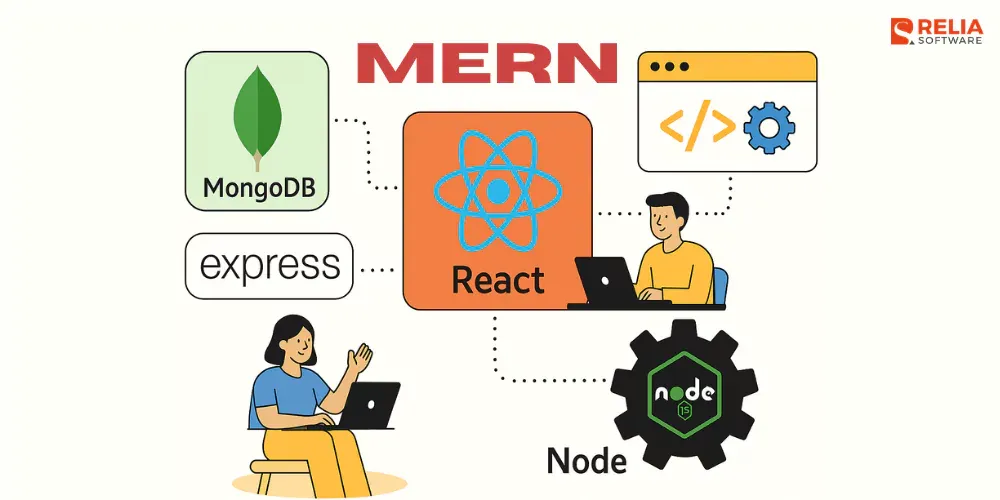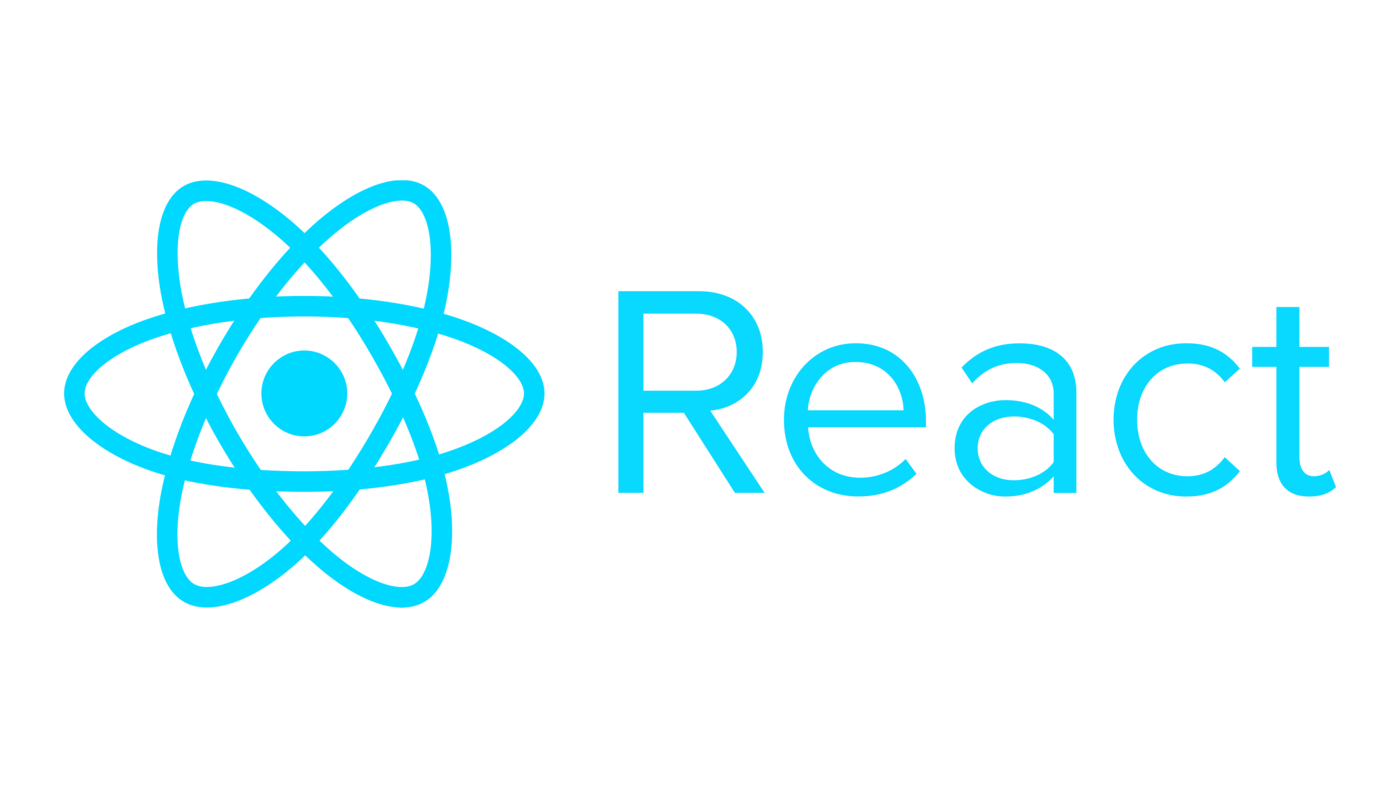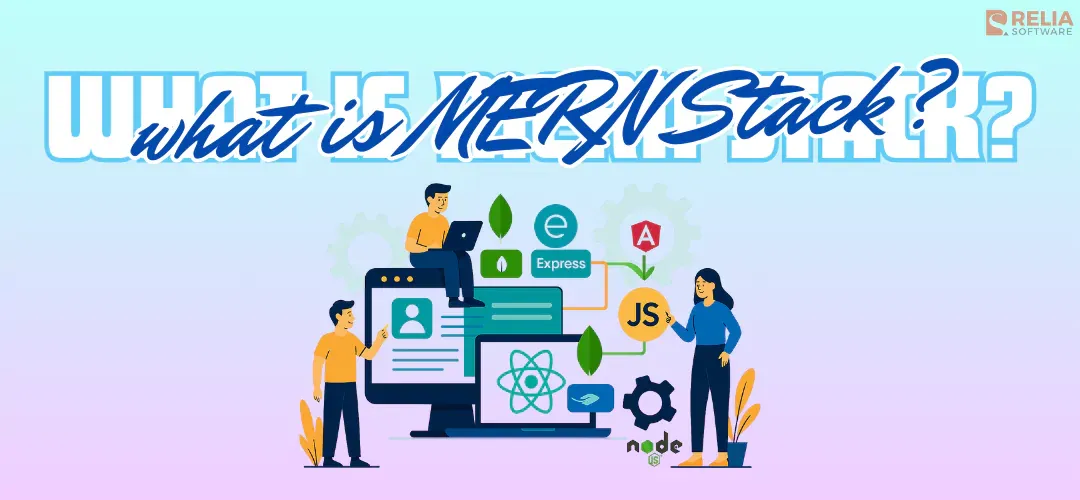Today, the MERN Stack is one of the most powerful tools for web developers. It lets them make web apps that are dynamic, interactive, and scalable. Examining every single component and their function in the stack, this paper delves deeply into MERN.
This in-depth tutorial will provide you with the knowledge you need to choose MERN in your next project, regardless of your level of experience as a developer wishing to expand or curious beginners wanting more about this framework.
>> Related Articles:
- What is MEAN Stack? A Detail Guide for Beginners
- A Comprehensive Guide to MEVN Stack Development
What is the MERN Stack?
The MERN Stack is a sophisticated mix of JavaScript tools that are often used to make modern, dynamic web apps. It is a popular full-stack MEAN stack variant. Using MERN lets developers use:
- MongoDB: A scalable, user-friendly NoSQL document database for storing and accessing data in web applications.
- Express.js: A lightweight Node.js web framework designed to facilitate the building of server-side application capability.
- React.js: This popular JavaScript toolkit lets one create interactive and user-friendly user interfaces (UIs).
- Node.js: A JavaScript runtime environment designed to let developers run JavaScript code outside of a web browser, hence producing a more consistent working experience.
Combining these elements helps MERN simplify the development process and free developers to concentrate on producing strong and effective web apps.

MERN Stack Components
MongoDB (Database)
Storing data is one of the most important parts of any web app. In the MERN stack, this is handled by MongoDB, which is a NoSQL database. Unlike traditional databases that use rows and tables, MongoDB stores data in a flexible format similar to JSON. This makes it a good fit for apps where the data changes often or doesn’t follow a fixed structure. That’s why many modern web apps use MongoDB — it works well with dynamic content that can grow or change over time.
Learning curve: If you’re used to SQL databases, MongoDB might take some time to get used to. Its style is different, but many developers find it simpler once they learn how it works.

Express.js (Backend Framework)
While MongoDB handles data storage and management, Express.js functions as the fundamental framework. This Node.js web framework enables developers to rapidly construct the server-side functionality of a MERN application. This also offers a comprehensive range of tools and features for managing routing, middleware, and API development.
In short, Express.js simplifies the task of constructing web servers, enabling developers to concentrate on the essential features of their applications.
Learning Curve: If you already know JavaScript, learning Express is quite smooth. Its simple design also makes it easy to reuse code, which saves time when building larger or more complex apps.

React.js (Frontend Framework)
React.js is the part of the MERN stack that builds what users see and interact with on the screen. It helps developers create dynamic and interactive websites by using something called components. These are like small building blocks that can be reused in different parts of the app, making everything more organized and easier to manage.
To conclude, React.js enables developers to create captivating and adaptable user experiences that meet the requirements of contemporary web applications.
Learning Curve: React can take some time to learn, especially when it comes to understanding how updates and changes happen in the background. But there are plenty of tutorials, videos, and community help available, which makes it easier for beginners to pick up and start building.

>> Read more:
- Mastering Axios in React.js for Effective API Management
- Next.js vs React: How to Choose the Right Framework?
- Top 9 Best React Animation Libraries for Web Developers
- 22 React Project Ideas For Developers of All Levels
Node.js (JavaScript Runtime Environment)
The utilization of JavaScript for both front-end and back-end development in MERN is enhanced by the inclusion of Node.js. Node.js facilitates the execution of JavaScript code in a non-browser context. It serves as the underlying framework for Express.js, facilitating the creation of server-side and enhancing the development process.
Learning Curve: For beginners, learning Node.js can be a bit tricky at first, especially because of how it handles tasks that run in the background. But if you already know some JavaScript, it becomes easier to understand over time. Developers who’ve worked with other programming languages often pick it up quickly once they get used to how it works.

>> Read more:
- Top 15 Node.js Projects for Beginners and Professionals
- A Comprehensive Guide for Node.js Dependency Injection
- Mastering Node.js Event Loop to Write Efficient Async Code
- Top 9 Best Node.js Frameworks For Web App Development
- How to Install Node.js on Ubuntu 22.04?
- How to Dockerize A Node.js Application & Deploy it To EC2?
- Unlocking Node.js Profiling to Optimize Application Performance
How Does MERN Stack Operate?
Now, let's look at how the components listed above work together to form a cohesive development environment. Understanding this process is critical for recognizing MERN's strength and efficiency in developing modern web apps.
The MERN Stack Operation:
-
User Interaction: When a user interacts with the web application's user interface, an event occurs.
-
React.js to Express.js: React.js records user interactions and makes a request (typically via an API) to the Express.js server.
-
Express.js in Action: The Express.js server accepts the request, performs any required server-side logic, and retrieves or manipulates data from the MongoDB database as needed.
-
Express.js Responds: The Express.js server sends a response to the front end, which may include data or instructions for altering the user interface.
-
React.js updates the UI: When React.js receives a response from the server, it adjusts the UI to reflect the user's interactions or data changes.
-
Node.js as the underlying framework: that enables the execution of JavaScript on the server side. It manages server-side operations, carries out database queries, and transmits data to the front end.
The way React, Express, MongoDB, and Node.js work together is what makes the MERN stack so effective. Each part plays a specific role, and together they form a complete system. When you understand how they interact, it becomes clear why MERN is a popular choice for building modern web apps. Since everything is written in JavaScript, it helps speed up development and makes the code easier to manage.

Advantages of MERN Stack
Faster Development Process
One clear advantage of the MERN stack is how it makes development faster and easier. Since it uses JavaScript for both the frontend (React) and backend (Node.js and Express), developers don’t need to learn different languages for each part of the app. They can use the same skills across the whole project. This helps teams work more smoothly, switch between frontend and backend tasks easily, and build apps in a shorter time.
Increased Scalability
Scalability is very important for web apps that have a lot of users and a lot of data. The MERN Stack excels in this field. MongoDB's schema-free structure enables easy data storage and expansion.
Moreover, Node.js's asynchronous nature makes it very good at handling a lot of simple requests. It makes sure that your app stays responsive even as the number of requests increases. This results in a more seamless user experience for the expanding audience of your application. However, it is not for complex querry on the server side due to the single-threaded nature of Node.js.
>> Read more: Database Scaling Explained: A Guide to Efficient Growth
Improved Performance
For any online app, it’s important that users have a smooth and fast experience. The MERN stack helps make that possible. React uses something called a virtual DOM, which lets the app update the screen quickly without reloading everything. This keeps the interface feeling fast and responsive.
On the backend, Node.js uses an event-driven setup that handles tasks efficiently, so the app can respond faster. When everything runs smoothly, users are more likely to stay, interact more, and come back, which is great for any business.
Simplified Code Management
It can be hard to keep up with a large codebase. In the MERN Stack, developers can use shared JavaScript utilities and tools to make sure that all of their code is consistent throughout the stack.
The standardization of the code makes it easier to maintain, encourages reusability, and lowers the chance of mistakes happening in different parts of the program. This reduces maintenance costs and makes apps more stable for users.
Disadvantages of MERN Stack
Security Concerns
Security is very important when building websites. All apps, including MERN ones, can have security holes. One example is that MongoDB's schema-less nature can make it easier to be flexible, but it can also make it harder to validate data and control access if it's not set up correctly. As a way to lower these risks, developers need to make security best practices a top priority. Vulnerabilities in security can lead to bad issues like data breaches and user accounts being hacked.
>> Read more:
- Top 7 Web App Security Testing Tools For Developers
- Top 14 Best Data Security Software For Your Businesses
Debugging Challenges
Full MERN stack applications are harder to debug than simpler stacks. Because the components are all linked to each other, errors can come from different parts of the application. To quickly find the root cause, developers need to know a lot about each technology. In the long run, this could mean higher maintenance costs because developers will have to spend more time fixing bugs.
Not Suit For Complexity
MERN excels in many areas but might not be the best choice for exceptionally complex applications with extremely high volumes of concurrent queries or data processing. Node.js can handle a significant amount of data efficiently, but for specific data structures and complex query patterns, alternative back-end technologies or database solutions might be more suitable.
Limited Ecosystem
Even though the MERN stack has a big and active community, some popular web development frameworks (like Python or Ruby on Rails) may have larger ecosystems of pre-built libraries and tools for specific tasks. This can give developers more ways to tackle problems and minimize development time if pre-built solutions exist.
>> Read more:
- Top 10 Best Golang Web Frameworks
- Top 15 Python Frameworks for Website Development
- Cross-Platform App Development: Top 5 Best Frameworks
Use Cases Of MERN Stack
MERN Stack capabilities go beyond its technological makeup. When you know the best ways to use this technology, you can make the most of its strengths and get the best results from your web development projects. Let's look at some situations where the MERN Stack shines:
Rapid Prototyping and MVPs
MERN streamlines development, enabling fast prototyping and MVPs. This is especially helpful for new businesses or startups that need to test an idea and get feedback from users before putting a lot of money into it. Flexible MERN Stack allows for quick iteration processes, which lets changes be made quickly based on what users need.
>> Read more:
- Proof of Concept (PoC) vs Prototype
- Proof of Concept (POC): A Guide to Validating Your Ideas
Real-time Applications
Dynamic, interactive web apps with real-time functionality are MERN Stack highlights. With Node.js's event-driven design and React.js's virtual DOM, changes to the user interface can be made without any problems, making the experience more interesting for the user. Because of this, MERN is ideal for applications that require frequent data updates, such as chat platforms, collaborative editing tools, and social media feeds.
Data-Driven Applications
The schema-less layout of MongoDB makes it easy to store and manage data in web apps. This is very helpful for programs that deal with lots of changing data that doesn't always fit into set schemas. MongoDB's flexibility can help platforms that update information all the time or content management systems that handle different kinds of material.
Single-Page Applications (SPAs)
React.js is a leader in constructing SPAs, which load one HTML page and dynamically update content without reloading. This gives the user a smooth and fast experience that feels like using a desktop app. The MERN Stack works well with Express.js, Node.js, and React.js, which makes it a great choice for creating SPAs that are smooth and enjoyable for users.
What’s New In MERN Stack Compared To MEAN Stack?
MERN and MEAN Stacks are popular for modern web apps. The main thing that distinguishes between these two development stacks is front-end frameworks. In detail:
React.js, a powerful and flexible toolkit, helps MERN develop complex user interfaces and Single-Page Applications. Modern web developers employ SPAs to create a smooth, responsive user experience like desktop apps. React's component-based architecture and UI focus fit this modular and reusable UI component trend.
On the other hand, MEAN uses Angular for a more structured development approach. This is a strong framework with built-in features and functions. Angular's flexible framework simplifies development for applications that follow patterns and best practices. However, it could limit flexibility for highly customized UIs that vary from web design patterns.
Here's a table summarizing the key differences between the MERN vs MEAN stack, especially React and Angular:
|
Feature |
MERN Stack (React.js) |
MEAN Stack (Angular) |
|
Framework Type |
JavaScript Library |
Full-fledged JavaScript Framework |
|
Learning Curve |
Easier to learn, good for rapid prototyping |
Steeper learning curve enforces structured development |
|
Data Binding |
Unidirectional |
Bidirectional |
|
DOM Manipulation |
Virtual DOM (faster for complex UIs) |
Real DOM manipulation (can be less performant for complex UIs) |
|
Structure |
More flexible, component-based architecture |
Enforces structure with components, modules, and directives |
|
Community & Support |
Larger, more active community |
Smaller but established community |
|
Best for |
Single-Page Applications (SPAs), dynamic UIs |
Complex web applications, enterprise-level projects |
How To Decide Between MERN & MEAN Stack?
Both stacks use the same back-end technologies, including Node.js, Express.js, and MongoDB, which makes sure that data handling and server-side logic are solid. Therefore, the key consideration when deciding between these two methods is the front-end one.
The decision between React.js or Angular relies on the needs of your project and the skills of your development team. React.js might be a better choice if you want to make modern, interactive SPAs with a focus on custom user interfaces. Otherwise, it might be best to use Angular if you value a structured method, built-in features, and following well-known web development patterns.
Considerations When Choosing MERN Stack for Your Project
Before you start, you should make sure that it fits exactly with the needs of your project work. Here are some important things to think about:
- Project Requirements: Assess project goals and functions. Are dynamic and interactive user interfaces important? Need real-time data updates for your app? These strengths make the MERN Stack a viable candidate for user engagement and real-time interaction applications.
- Development Team Expertise: Consider your development team's expertise. If your team knows JavaScript, React.js, Node.js, and MongoDB, the MERN Stack can be useful. If your team is more comfortable with Angular or Python (Django), a learning curve may be involved. Think about training or switching technology stacks to match your team's skills.
- Project Timeline: The MERN Stack's streamlined development methodology may speed up development. Rapid development is useful for projects with tight deadlines or that need quick prototypes or MVPs.
- Project Scalability: Consider app growth. MERN Stack horizontal scalability lets you add servers to manage growing user loads. Your app can scale without affecting performance.
- Project Budget: The MERN Stack is open-source and free, but development expenses depend on project complexity and the requirement for extra tools or libraries. Check your budget against development costs.
You can decide if the MERN Stack is right for your project by carefully considering these factors. Remember that this stack focuses on quick development, real-time functionality, data flexibility, and SPA development, but not a one-size-fits-all solution.
Conclusion
The MERN Stack is great for a lot of different web apps because it is flexible, focuses on fast development, and can handle real-time interactions. Understanding MongoDB, Express.js, React.js, and Node.js' strengths and weaknesses can help you decide whether MERN suits your project or not. Hope that this article gains you useful knowledge!
>>> Follow and Contact Relia Software for more information!
- development

